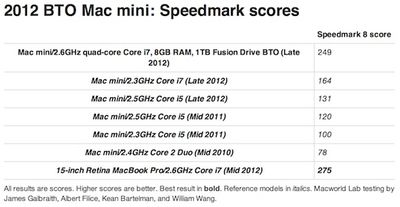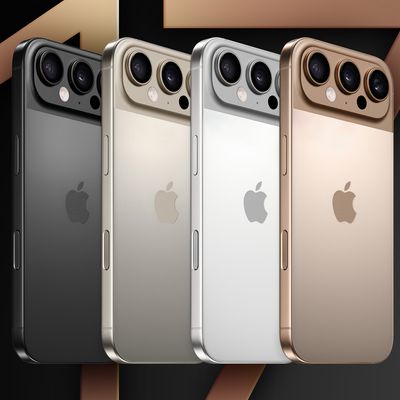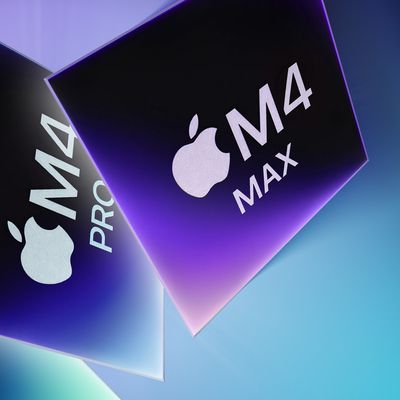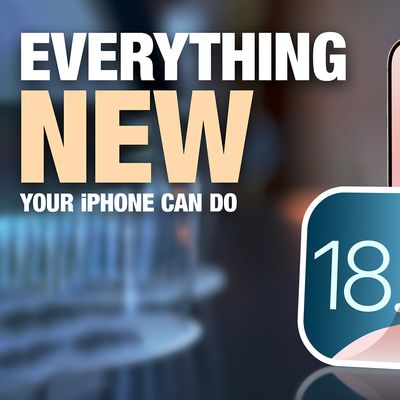Apple's Fusion Drive: Faster Performance in a Simple Consumer-Focused Package
Over the past couple of weeks, we've taken a few looks at Apple's new Fusion Drive used in the latest Mac mini and the upcoming iMac. The Fusion Drive system uses software to seamlessly integrate a 128 GB solid-state drive (SSD) with a 1 TB or 3 TB traditional hard drive to offer users the best of both worlds when it comes to speed and capacity. System files and other frequently used data are automatically moved to the SSD for maximum speed, with lower-priority data being stored on the much larger traditional hard drive.
Macworld has now conducted some benchmarks on the various Late 2012 Mac mini models, including one equipped with Fusion Drive, demonstrating how much faster the system runs with the benefit of the SSD.
[I]t was the Fusion Drive that really kicked the BTO Mac mini into overdrive. The standard configuration $799 Mac mini with its 5400-rpm hard drive took more than three times as long to complete our copy file and uncompress file tests as the Fusion Drive did in the BTO Mac mini. The BTO Mac mini’s PCMark productivity test score (using VMWare Fusion) was three times higher than the high-end standard configuration’s score. [...]
The BTO Mac mini was actually faster than the Retina MacBook Pro in a few tests, like the iPhoto, iMovie, and Aperture import tests. But file copy and file uncompress tests were a bit faster on the Retina MacBook Pro with its “pure” flash storage than on the Mac mini’s Fusion Drive.

A new video posted by TechfastLunch&Dinner also shows how keeping the system files on the fast SSD cuts boot times in half for the Fusion Drive-equipped Mac mini compared to a similar system using only a traditional hard drive.
Ars Technica has also posted a
thorough examination of how the Fusion Drive works at a detailed level. The report notes that Fusion Drive is a solid consumer-focused tiering solution with some distinct differences from other caching and tiering implementations.
There are no options to configure, no pinning settings to adjust, and no user-visible method to decide what goes where. The FD volume is a single volume, and its Core Storage underpinnings direct all IO to the SSD first. New files are saved transparently to the SSD side of the Fusion Drive, as are new applications you install. Everything goes to the SSD first.
The logic behind this is clear: Fusion Drive is not meant to be a feature that appeals to the propeller-head geek. The kind of person who already has an SSD and a spinny disk in his Mac... and who symlinks his iTunes and iPhoto libraries off the HDD onto the SDD... and who enjoys meticulously balancing out which files go where will almost certainly not enjoy Fusion Drive's hands-off approach. Fusion Drive is not designed to be poked at or prodded. Rather, much in the same way that Time Machine's hands-off approach brought backup to people who otherwise wouldn't be bothering, Fusion Drive's hands-off approach brings tiering to Mac masses who otherwise can't be bothered. The presentation is very Apple-like, with no knobs to twiddle.
Ars Technica goes on to force chunks of data and whole files to be promoted up to the SSD, examines Boot Camp functionality on the Fusion Drive, and explores what happens should one of the drives fail.
Popular Stories
Apple's iPhone 17 Pro and iPhone 17 Pro Max will offer "significant design changes," The Information's Wayne Ma reports.
The two flagship iPhone 17 models will be the first high-end iPhones to feature an aluminum frame since the delineation of the iPhone lineup into Pro and non-Pro models. In recent years, lower-end iPhone models such as the iPhone SE and iPhone 16 have featured aluminum...
The Information's Wayne Ma and Qianer Liu today published an in-depth report about the "iPhone 17 Air," revealing several new details about the device.
The report said prototypes of the device have a thickness of between 5mm and 6mm, which would make it the thinnest iPhone ever. In comparison, iPhone 16 models are 7.8mm thick and iPhone 16 Pro models are 8.25mm thick.
Due to this...
Black Friday 2024 is just a few days away, and as always this will be the best time of the year to shop for great deals. Right now, this includes big savings on popular Apple products like AirPods, Apple Watch, MacBook Air, iPad, and more.
Note: MacRumors is an affiliate partner with some of these vendors. When you click a link and make a purchase, we may receive a small payment, which helps...
We're less than one week away from Black Friday on November 29, and Best Buy and Amazon currently have all-time low prices across Apple's entire iPad lineup. This includes Apple's 9th and 10th generation iPad, iPad mini 7, iPad Air, and iPad Pro.
Note: MacRumors is an affiliate partner with some of these vendors. When you click a link and make a purchase, we may receive a small payment, which...
While the iPhone 17 Pro and iPhone 17 Pro Max are not expected to launch for 10 more months, there are already plenty of rumors about the devices.
An imaginative iPhone 17 Pro concept based on rumors
Below, we recap key changes rumored for the iPhone 17 Pro models so far:
Aluminum frame: iPhone 17 Pro models are rumored to have an aluminum frame, whereas the iPhone 15 Pro and iPhone 16 Pro ...
We've been focusing on deals on physical products over the past few weeks, but Black Friday is also a great time of year to purchase a streaming membership. Some of the biggest services have great discounts for new and select returning members this week, including Disney+, Hulu, Paramount+, and Peacock.
Note: MacRumors is an affiliate partner with some of these vendors. When you click a link...
Apple's fall 2024 Mac announcements have included new iMac, Mac mini, and MacBook Pro models, all of which debuted with variants of Apple's M4 chip. Apple intends to update the rest of its Mac lineup with M4 series processors over the next 12 months, which will make it the first time that Apple has used the same chip generation across all of its Macs.
This means we can expect new M4...
Apple is set to release iOS 18.2 in early December, bringing the second round of Apple Intelligence features to iPhone 15 Pro and iPhone 16 models. This update brings several major advancements to Apple's AI integration, including completely new image generation tools and a range of Visual Intelligence-based enhancements. There are a handful of new non-AI related feature controls incoming as...
























